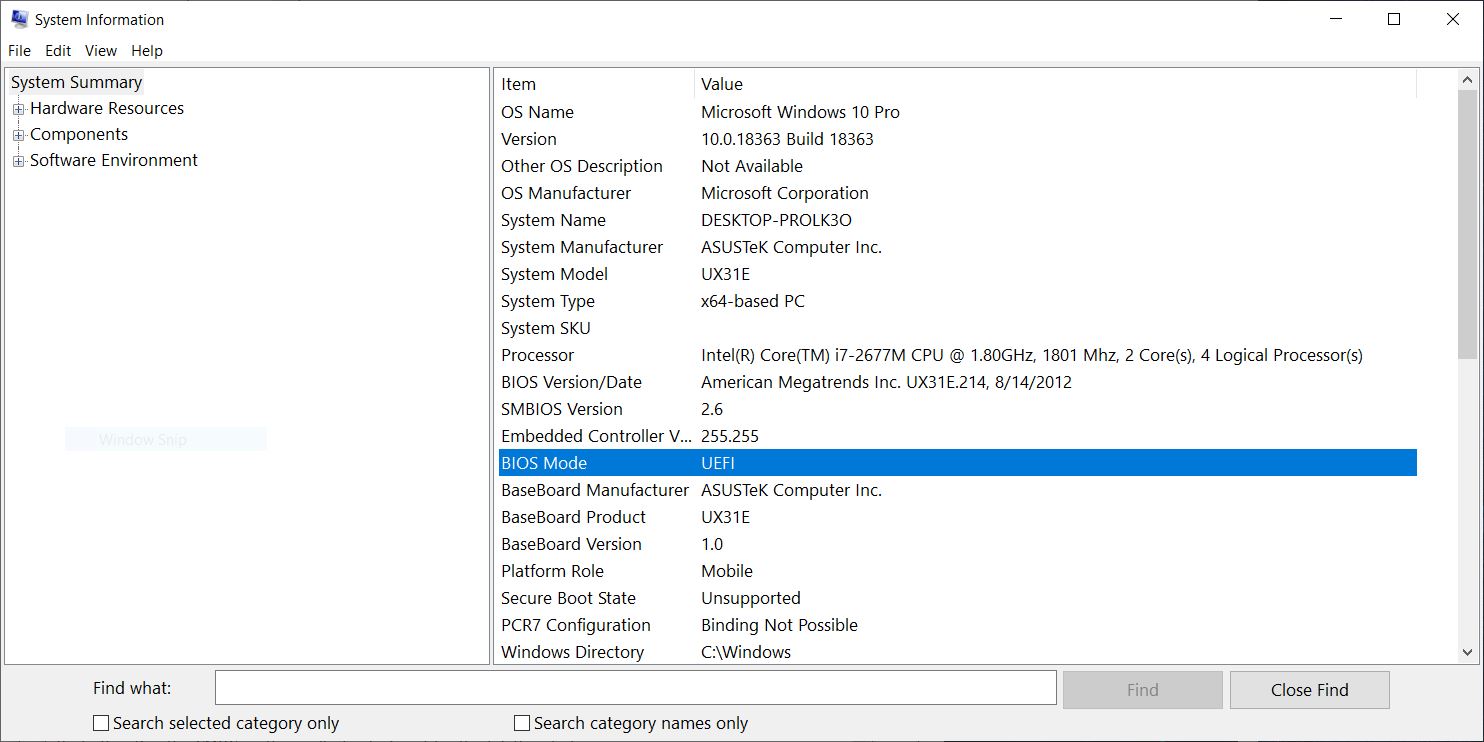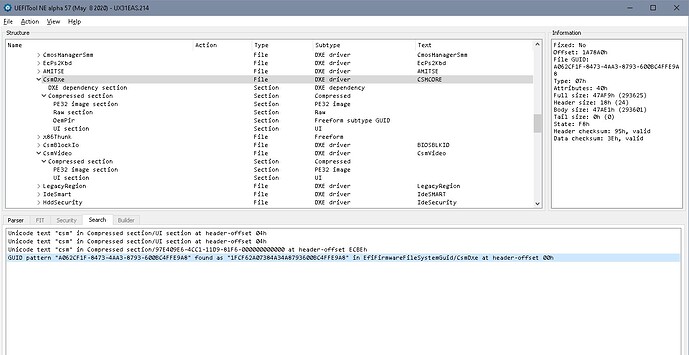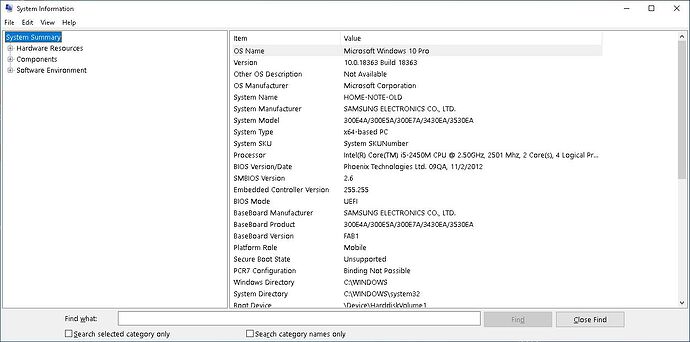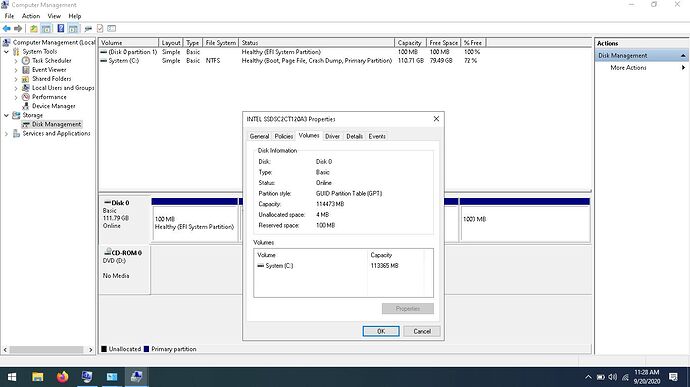@technot @Lost_N_BIOS
Since it turned out, that the origin of the problem was the old UEFI BIOS and not a wrong or missing Intel AHCI driver, I have moved this discussion into the "BIOS Modding Requests" Sub-Forum and hope, that this is ok for you.
Good luck!
Dieter
Hope you can get CMOS cleared, sometimes that’s not possible on laptop so easily. One thing to try, remove all hard drives, and remove ALL memory, try to boot it and let it fail, then put back in one stick of memory with no hard drive still. Sometimes that will cause fail safe to load
No fans spinning? That’s not good! I assumed it was running, just no display, since this is the thing many laptop users do once they have unlocked BIOS, it’s my general warning I give to all users I unlock laptop BIOS for >>
*** WARNING - To ANYONE with laptop and unlocked BIOS!!! ***
DO NOT try to enable this graphics card or disable that card, switch cards etc. Otherwise you will end up with no display output (ie black screen) and no way to recover except by blind flash or with flash programmer.
You can change graphics related settings, like changing memory sizes, or core speeds etc, just don’t try to disable one card or change which is main etc.
Additionally, be very careful when trying to undervolt CPU, you can leave BIOS unbootable due to CPU voltage too low (Sometimes even 0.05 is too much)
I wonder a little why you tried a fresh install in UEFI mode? I converted 2 laptops with HM65 chipset from Win 10 legacy to Win10 Uefi without any problems (both Samsung, 1 AMI, 1 Phoenix). Of course there’s no ‘secure boot’ option, they have to use CSM mode as there is no uefi graphics dxe included in bios. But I tried with an old USB stick with win10 1607 on the Phoenix NB, harddisk (GPT with Windows installation) is detected without complaints. Controller shown in Win10 (UEFI) is 8086 1c03, same as yours…
Is there a possibility Windows installation got confused by your Linux partitioned harddisk? You didn’t completely ‘un’-partition it before trying to install Windows, did you?
Anyway, hope you get your CMOS cleared and hope that’s going to solve your boot problem…
@lfb6 - Thanks, this BIOS does not have CSM, even hidden, so that may be the issue here, along with Rufus media creation issues, or partition stuff you mentioned
@Lost_N_BIOS I don’t understand- you mean it doesn’t have csm- options in the bios? But that’s not needed- CSM is always ‘on’ since there is no possibility for ‘pure’ UEFI boot since there aren’t any uefi drivers for video for example?
That’s the bios I could download from ASUS for the mentioned Zenbook UX31e (link). I thought that would pretty much look like a CSM- what am I missing here?
@lfb6 - Sorry for any confusion, I was referring to the BIOS setting to enable/disable CSM. Generally BIOS that have OS Type choice, also have CSM setting option, but this one does not.
@Lost_N_BIOS For my Phoenix HM65 the only mentioning of UEFI is ‘UEFI boot support’ enabled/ disabled. Since disabling CSM would make the system unbootable this seems quote OK to me.
Anyway, that shouldn’t prevent Win10 from installing in UEFI mode, just secure boot will not be possible.
I tried to delete the ubuntu install, and reset the drive completly by making a fresh new GPT, but no matter what I did windows did not detect the drive:(
As to why, no good answer. I was planning to run kvm+qemu on the ubuntu, and wanted to try that with UEFI mode, but also have a bare metal windows10 install at the same time, so since i had it in UEFI mode for the ubuntu, i thought id make a go getting win10 in UEFI mode as well.
And yeah, there was no CSM choices in the bios, nor any mention of secure boot. But I dont need secure boot anyway.
By the looks of it, the bios does indeed lack a UEFI rom for vbios, but as I understood it, that shouldnt really be an issue. I still dont understand why win10 failed to detect the drive.
Hopefully I will get the T4 torx on Monday/tuesday, and hopefully a CMOS reset will do the trick to atleasst get it booting again so I can continue ![]()
If i cant make it work, I will just run win10 as a VM with kvm/qemu and passthrough the iGP.
Thanks again all of you for insights and answers ![]()
@technot - Connect drive as a spare/secondary drive, then do the following with diskpart to make drive RAW again. Or do whatever makes drive RAW in Linux too, would = same/same, if you know better about doing it in there (Linux partition on the drive is why Windows cannot see the drive)
You can use diskpart in windows from OS (Direct from any CMD Prompt), or from installer ISO (press Shift + F10 on the first setup screen where you pick language)
Or from repair/troubleshoot options in the installer/setup. Remove all other drives, so you have only USB and target win10 drive. Then from CMD prompt do the following
1. Diskpart
2. List Disk << Here, identify what your target disk is by size/name etc, and make note of it’s #, you will use it’s # next - (If in windows, these #'s will match what you see the drives shown as in Disk Management) - Be sure you do not select your USB or main OS drive if in OS
3. select disk # << Here, instead of #, put target disk #, example >> select disk 0
4. clean
5. Exit
You can’t boot to UEFI mode without CSM option in the BIOS, when there is no EFI GPT (UEFI vBIOS) to load, graphics would be loaded out legacy and without CSM enabled this isn’t going to work (black screen/no display out)
Seeing that now, and looking at the BIOS contents, and possible BIOS settings (hidden, and missing), I don’t think you can boot UEFI here due to this graphics issue alone, not to mention other stuff you should change which is not in the BIOS (so all locked to legacy)
@Lost_N_BIOS Not having a CSM option visible in bios does not mean that there is no CSM and that you can’t UEFI-boot. CSM mode is always enabled, loading legacy video bios/ orom in uefi mode!
Check attached bios- no CSM option, no video dxe, but Windows 10 1909 installed in UEFI boot mode.
09QA.zip (1.57 MB)
@lfb6 - Yes, some models it may work, but it’s not very common is it? I’ve seen nothing but problems in many old systems right around UEFI intro era, that didn’t have CSM or OS Type choice in BIOS, often had issues to boot UEFI
What brand and model is this so I can keep that BIOS in a proper folder, thanks. Also, for this thread, what chipset is that?
Thanks for the info, hopefully he can get it sorted out 
@Lost_N_BIOS Samsung NP300E5A (NP300E4A/ NP300E7A/ NP3430EA/ NP 3530EA), HM65 chipset.
I have another Samsung 400B4B (400B5B/200B4B/200B5B) notebook, also HM65, but AMI bios. I think it works the same way, but I haven’t physical access right now. I’ll attach the bios just in case…
Edit 240920: Just to confirm that the Samsung with AMI bios does boot in UEFI mode, too:
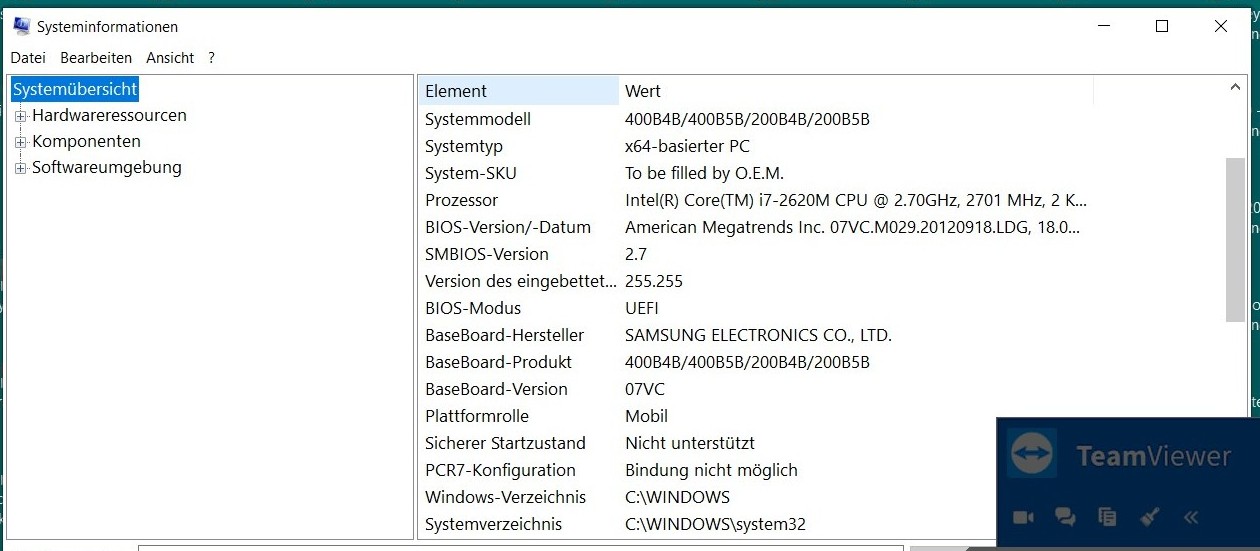
07VC.zip (1.36 MB)
update:
Got the torx, unscrewed the backpanel, unplugged and removed the main battery. Located the CMOS battery and unlugged its supertiny connector to the motherboard. Hit the start button a couple of times to make sure there was no residual power keeping the cmos, replugged the jumper, battery and screed the backpanel back.
Low and behold, the laptop booted again… ![]()
Entered the bios, and changed only the settings related to UEFI and rebooted with the original usb stick made with rufus. And this time windows detected the drive just fine, and installed without a hic.
I am now thinking that what lead me to problems, was flashing the bios, without a proper cmos reset after the flash. Reseting the CMOS on these ultrabooks is not for the fainthearted.
